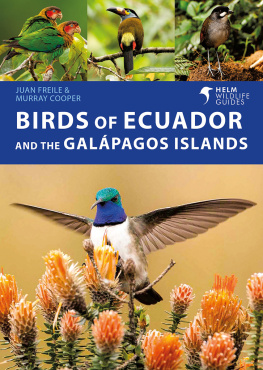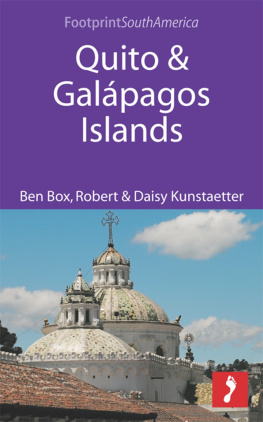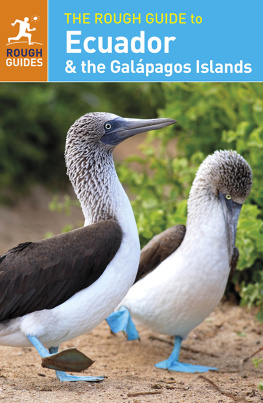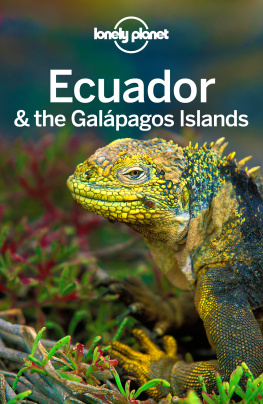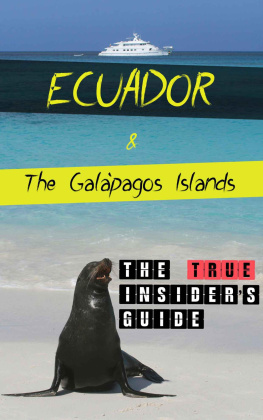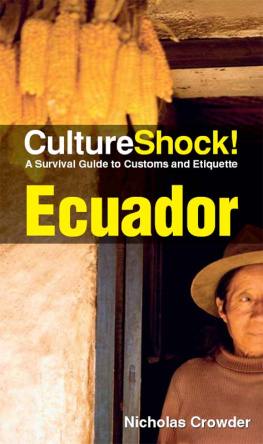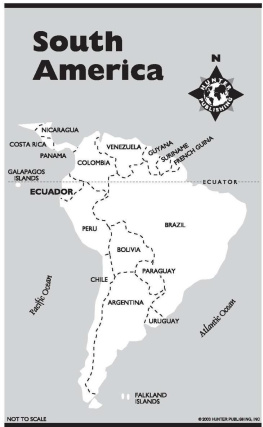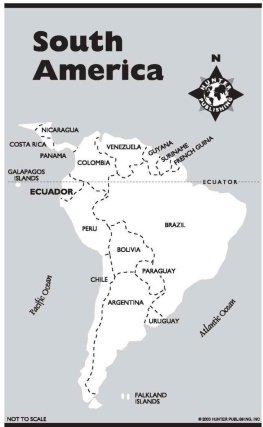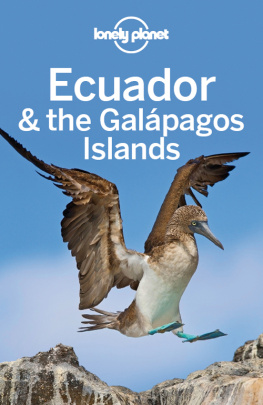
HELM
Bloomsbury Publishing Plc
50 Bedford Square, London, WC1B 3DP, UK
29 Earlsfort Terrace, Dublin 2, Ireland
This electronic edition published in 2022 by Bloomsbury Publishing Plc
BLOOMSBURY, HELM and the Diana logo are trademarks of Bloomsbury Publishing Plc
First published in the United Kingdom 2023
Text Juan Freile 2023
Photographs Murray Cooper 2023, bar images as listed
Juan Freile and Murray Cooper have asserted their rights under the Copyright, Designs and Patents Act, 1988, to be identified as Authors of this work.
All rights reserved
You may not copy, distribute, transmit, reproduce or otherwise make available this publication (or any part of it) in any form, or by any means (including without limitation electronic, digital, optical, mechanical, photocopying, printing, recording or otherwise), without the prior written permission of the publisher. Any person who does any unauthorised act in relation to this publication may be liable to criminal prosecution and civil claims for damages.
Bloomsbury Publishing Plc does not have any control over, or responsibility for, any third-party websites referred to in this book. All internet addresses given in this book were correct at the time of going to press. The authors and publisher regret any inconvenience caused if addresses have changed or sites have ceased to exist, but can accept no responsibility for any such changes.
A catalogue record for this book is available from the British Library.
Library of Congress Cataloguing-in-Publication data has been applied for.
ISBN: 978-1-4729-9337-3 (PB)
ISBN: 978-1-4729-9338-0 (eBook)
ISBN: 978-1-4729-9339-7 (ePDF)
Design by Julie Dando
To find out more about our authors and their books please visit www.bloomsbury.com where you will find extracts, author interviews and details of forthcoming events, and to be the first to hear about latest releases and special offers, sign up for our newsletters.
CONTENTS

For continued support in recent years Juan Freile thanks: Xavier Amigo, William Arteaga, Jorge Bedoya, Alex Boas, Elisa Bonaccorso, Duan Brinkhuizen, Hctor Cadena, Luis Calapi, Luis Carrasco, Juan C. Crespo, Renata Dures, the Fundacin para la Conservacin de los Andes Tropicales (FCAT) crew, Juan C. Figueroa, Jorge Flores, Rossy Gaibor, Paul Greenfield, Esteban Guevara, Ben Haase, Jordan Karubian, Niels Krabbe, Jos M. Loaiza, Yolanda Luna, Darwin Martnez, Teresa Mendoza, Andreina Morn, the Nature & Culture International crew, Lelis Navarrete, Andrea Nieto, Jonas Nilsson, Edison Ocaa, Scott Olmstead, Leo Ordez, Fernanda Patio, Paolo Piedrahita, Alegra Plaza, Sandra Pla and Conaves, Glenda Pozo, Rebeca Rivas, Luis Salagaje, Manuel Snchez, Tatiana Santander, Wilmer Shiguango, Boris Tinoco, Pal Tito, Carolina Tosta and Julie Watson. Fuller acknowledgements of the people and institutions who shared knowledge, field experiences, ideas, etc. are included in the Helm Field Guide Birds of Ecuador (Freile & Restall, 2018). Special thanks to Jenny Campbell for her editorial support and to Roger Ahlman and Duan Brinkhuizen for providing their superb photographs. As always, thanks to the family Freile Ortiz, including Marimba, and to Daniela Pastrana and Valentina Zambrano.
Thanks must also go to the network of national parks and protected areas, plus all of the private reserves and lodges, for allowing the raw material for this book to have a protected space in which to hop, jump, fly, eat and nest. Without these wild spaces this collection would be impossible!

Waved Albatross pair on Isla Espaola, Galpagos.
Birding in Ecuador is a wonderful experience for both the keen birder and the novice. Being one of the most biodiverse countries on Earth, Ecuador has plenty to offer nature lovers across its varied wild areas, including the superb Galpagos archipelago. Access to most regions and ecosystems is reasonably good as the country is small, and has a good road network, fairly low-priced transportation, lodging and food, excellent birding and naturalist guides, large protected areas, and very good tourist infrastructure virtually throughout the country.
This photographic guide is intended for nature lovers who are not addicted to birds. It does not cover the entire avifauna of Ecuador, which would be impossible in a book of this size given that more than 1,700 species have been recorded in the country. For those seeking a complete guide to its birds, we recommend the most recent guide published by Helm (Freile & Restall 2018), as well as other books such as Birds and Mammals of the Galapagos by Brinkhuizen & Nilsson (Lynx Edicions, 2020) and earlier works by McMullan & Navarrete (Fieldbook of the Birds of Ecuador, Ratty Ediciones, 2017) and Ridgely & Greenfield (The Birds of Ecuador, Cornell University Press, 2001). Those interested in general wildlife might need a copy of Vsquezs photographic guide (Wildlife of Ecuador, Princeton University Press, 2017).
We have selected 332 species that travellers might easily encounter in different areas throughout Ecuador. Choosing these species was not a simple task, and some missing species could easily have been included. Unfortunately, space constraints compelled us to omit some must-see species, including several of our favourite birds and many key species from a conservation standpoint, like the 42 Ecuadorian endemics (species that breed in no other country). A few examples of these endemics are listed in the next section.
The 332 species presented in this photographic guide cover a representative sample from all geographic regions, most ecosystems and as many families as possible, including charismatic and classic tropical birds like parrots, toucans, hummingbirds, tanagers and quetzals. In addition to a description of each species appearance and behaviour, we include a brief where to see section in the accounts. Again, space limits precluded us from providing full details, but online platforms like eBird (ebird.org) provide complementary resources for those requiring additional information.
We also include a section on the best birding sites. Again, the selection is somewhat incomplete because of the wealth of birding hotspots in Ecuador. However, we are confident of providing a fair coverage of the most remarkable areas for birders and nature lovers alike. Each site has reference coordinates and elevation. A few logistical details and representative species are mentioned for each site. We also include a summary of bird conservation in Ecuador, aiming to raise readers interest in this topic while travelling through the country.
Ecuador is full of natural wonders. Extensive Amazonian rainforest covers very large expanses of the east, whilst continuous, pristine Andean cloud forest shrouds steep slopes and deep creeks. Needless to say, the Galpagos Islands, including their coral reefs and other marine ecosystems, are among the best-preserved natural areas worldwide. Nonetheless, conservation problems are on the rise in nearly all regions of Ecuador.
Scarce natural habitats persist in most of the Pacific lowlands or temperate Andean valleys, while deforestation is spreading in the northern Amazon, the wet Choc rainforests of Esmeraldas, and the AndeanAmazonian foothills. Main causes of habitat loss are intensive agriculture and cattle pastures, timber extraction, water pollution, slash-and-burn agriculture, and oil and mining exploitation, whereas unsustainable hunting and fishing are depleting species populations, and invasive species predators, competitors, parasites, disease vectors are causing serious declines in Galpagos birds.

